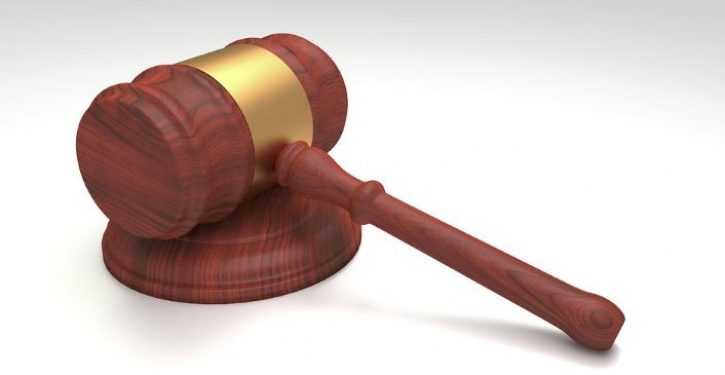
A judge in Orange County, California ruled that it’s racist to believe that crime rates differ by race, even though the U.S. Supreme Court has recognized that crime rates differ by race, and the federal Bureau of Justice Statistics has specifically noted that the black homicide rate is higher than the white homicide rate. This may reflect the false left-wing dogma that crime rates don’t differ by race, and that blacks are incarcerated at a higher rate than whites due to “overpolicing.”
The Orange County judge disqualified a San Diego judge from hearing cases under California’s Racial Justice Act, citing his statement that “There is absolutely no evidence that… the proportion of persons in an ethnicity committing a crime must be the same as the proportion of the population.” In her ruling, Judge Cheri Pham decided that “From his comments, a person aware of the facts could reasonably believe that Judge Shore believes certain racial or ethnic groups commit more crimes than others.” Never mind the fact that certain racial and ethnic groups do in fact commit more crimes than others.
It is hard to reconcile Judge Pham’s ruling with the U.S. Supreme Court’s 8-to-1 decision in United States v. Armstrong (1996), where the Supreme Court said there’s no “presumption that people of all races commit all types of crimes” at the same rate, since that presumption is “contradicted by” real world data. The Supreme Court in that case rejected a claim that more blacks being prosecuted showed racism.
It is also hard to reconcile her decision with the Supreme Court’s 6-to-3 ruling noting that it is “completely unrealistic” to think that in the absence of racism, minorities will be represented in a field “in lockstep proportion to their representation in the local population.” (See Richmond v. J.A. Croson Co. (1989)).
Under the logic of Judge Pham’s ruling, the U.S. Supreme Court is racist, and should be barred from hearing cases involving racial bias or black defendants.
Contrary to Judge Pham’s assumption, there’s plenty of evidence that crime rates differ, including from the federal Bureau of Justice Statistics, which noted that rates of committing homicide “for blacks were more than 7 times higher than the rates for whites” between 1976 and 2005, in its publication, Homicide Trends in the United States. In 2019, 6,425 black people committed homicide, compared to only 4,728 white people, according to the FBI’s Uniform Crime Report.
Arrest rates for different races reflect their crime rates, not — for the most part — racism by the police. A 2021 study by the federal Bureau of Justice Statistics found that although blacks are arrested for serious nonfatal violent crimes at much higher rate than whites, this mostly reflected underlying crime rates, not racism: “white and black people were arrested proportionate to their involvement in serious nonfatal violent crime overall and proportionate to their involvement in serious nonfatal violent crime reported to police.” (See Allen J. Beck, Race and Ethnicity of Violent Crime Offenders and Arrestees, 2018).
The fact that the black percentage of people arrested was similar to the black percentage of perpetrators of “crime reported to police” is telling, because the people who report violent crimes to police — mainly crime victims — are disproportionately black people themselves. Since victims are overwhelmingly the same race as their attacker, there is no reason to think that they are reporting those crimes out of racism. Most crimes against black people are black-on-black, according to the federal Bureau of Justice Statistics. “Most violent incidents against white (69%) and black (66%) victims were committed by an offender of the same race or ethnicity as the victim,” reported the BJS in “Criminal Victimization, 2020 – Supplemental Statistical Tables.” According to FBI data, 89 percent of blacks who were murdered in 2018 were killed by black offenders.
Other studies have also found that the criminal-justice system is not racist in most of its applications, as a 2024 meta-analysis of the criminal justice system found. The RAND Corporation statistical expert Dr. Stephen P. Klein, a left-leaning researcher, looked carefully at California’s state criminal justice system and, controlling for relevant variables, found that criminal sentencing in California was racially fair and non-discriminatory, overall, and that blacks and whites in California who were similarly-situated got very similar sentences. (See Stephen P. Klein, et al., “Race and Imprisonment Decisions in California,” 247 Science 812 (1990)).
But these realities did not affect the ruling of Orange County Superior Court Judge Cheri Pham, as described in the San Diego Union-Tribune:
In a ruling thought to be the first of its kind, an Orange County judge disqualified a San Diego judge from hearing multiple cases under California’s Racial Justice Act, finding that there are reasonable questions about whether recently censured San Diego Superior Court Judge Howard Shore can remain impartial given his prior “insensitive language and comments” in the courtroom.
“From his comments, a person aware of the facts could reasonably believe that Judge Shore believes certain racial or ethnic groups commit more crimes than others,” Orange County Assistant Presiding Judge Cheri Pham wrote in part of one of her orders of disqualification, citing remarks Shore had made in previous hearings…..
The Orange County judge noted that Shore had previously questioned whether systemic racism exists in the legal system. In another hearing, Pham wrote, he questioned statistics that show minorities are imprisoned at a disproportionate rate.
“There is absolutely no evidence that… the proportion of persons in an ethnicity committing a crime must be the same as the proportion of the population,” Shore said in one hearing, according to a transcript.
Citing the standard for disqualification, Pham said such comments could make a person reasonably believe “that Judge Shore believes certain racial or ethnic groups commit more crimes than others and that he will not give weight to statistical evidence that indicates there is an implicit bias against certain racial or ethnic groups.”
Additional considerations cited by Judge Pham (e.g., Judge Shore’s “discounting”of “implicit bias,” which some researchers say is debunked pseudo-science; and Judge Shore’s “using the n-word without prompting as part of a thought experiment”) are discussed in the article, found at this link.
Judge Pham may think arrest and incarceration rates for all groups should be the same. But requiring that would be a violation of the Constitution’s equal protection clause, because different groups violate the rules at different rates. For example, a federal appeals court struck down as an illegal racial quota a rule that forbade a “school district to refer a higher percentage of minority students than of white students for discipline,” in People Who Care v. Rockford Board of Education, 111 F.3d 528, 537-38 (7th Cir. 1997). It noted that “Racial disciplinary quotas violate equity in its root sense. They entail either systematically overpunishing the innocent or systematically underpunishing the guilty. They place race at war with justice. They teach schoolchildren an unedifying lesson of racial entitlements.”
It is unfair to require equal punishment rates for groups that misbehave at different rates. As the Supreme Court has noted, “Sometimes the grossest discrimination can lie in treating things that are different as though they were exactly alike.” See Jennett v. Fortson (1971).
Regarding Judge Shore’s imprudent use of the n-word as a “thought experiment”: Using the n-word has sometimes been held to be protected speech when people use it in hypotheticals or discussions of its racist nature, see Hardy v. Jefferson Community College, 260 F.3d 671 (6th Cir. 2001), but obviously, it is unwise for a judge to use the word in this day and age. (Despite that, civil-rights liability for the use of such language in judicial hearings or trial preparation is sometimes barred by judicial or prosecutorial immunity, such as when a prosecutor quoted someone’s use of the word in preparing for trial, and offended black employees in the process, see Savage v. Maryland, 896 F.3d 260 (4th Cir. 2018)).
It should be noted that there is some degree of racism in the criminal justice system, even though it is not standard operating procedure for police, prosecutors, or judges. A well-known study did find a degree of racism in police stops based on the day-night difference in stops for blacks versus whites, concluding that black motorists were stopped at something like a 10% higher rate than similarly-situated whites. That did show some instances of racism against black motorists, even though it did not suggest that most police stops were due to racism.
But as a 2021 BJS report indicates, the higher black crime rate is the main reason for the higher black arrest rate, not racism — arrests are largely proportional to underlying crime rates and crimes reported to the police by victims, who themselves tend to be of the same race as their attacker, and have no racist motive for reporting a crime.



